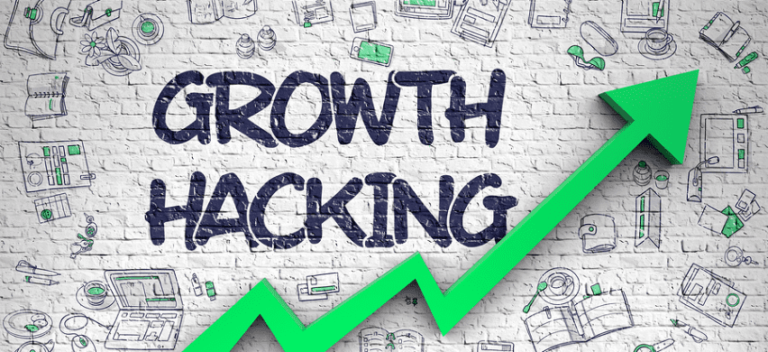How to Build a Lead Magnet That Actually Converts in 2025
In an era of content saturation and increasing privacy concerns, creating lead magnets that genuinely convert has become both more challenging and more critical for digital marketers. The days of offering generic PDFs in exchange for email addresses are long gone—today’s consumers expect personalized, immediately valuable resources that solve specific problems and deliver clear results.
This comprehensive guide will walk you through the step-by-step process of creating high-converting lead magnets for 2025’s sophisticated digital landscape, incorporating the latest research on consumer psychology, content formats, and conversion optimization.
The Current State of Lead Magnets
Before diving into creation strategies, it’s important to understand how lead magnets have evolved:
Key Changes in 2025’s Lead Magnet Landscape:
- Information Expectations: Consumers now expect specialized knowledge not readily available through search engines
- Format Preferences: Interactive and personalized formats outperform static documents by 3-4x
- Value Threshold: The perceived value must be significantly higher as privacy concerns increase
- Delivery Mechanisms: Instant gratification through seamless delivery is now standard
- Personalization Level: One-size-fits-all resources have seen conversion rates drop by 60%+
Current Conversion Benchmarks by Industry:
| Industry | Average Conversion Rate | Top Performer Rate |
|---|---|---|
| B2B SaaS | 4.7% | 12.3% |
| E-commerce | 3.2% | 8.7% |
| Financial Services | 2.8% | 7.5% |
| Health & Wellness | 5.3% | 14.1% |
| Education | 6.8% | 16.4% |
Step 1: Strategic Research & Positioning
The foundation of a high-converting lead magnet is thorough research that identifies a specific, compelling problem your audience needs solved.
Audience Pain Point Identification:
Tactical Approach:
- Conduct voice-of-customer research:
- Analyze customer support tickets and identify recurring questions
- Review sales call transcripts for common objections
- Mine social media conversations for expressed frustrations
- Survey existing customers about their biggest challenges
- Competitive gap analysis:
- Assess what resources competitors offer and their perceived quality
- Identify information gaps that remain unfilled in your industry
- Analyze review sentiment for competitor resources
- Search intent mapping:
- Identify problem-focused search queries related to your solution
- Analyze search features (PAA boxes, featured snippets) for insight
- Use keyword research to quantify problem frequency
Case Study: A B2B marketing software company increased lead magnet conversion rates from 3.8% to 11.2% by shifting from a generic “Marketing Automation Guide” to a highly specific “7-Minute Email Sequence Builder for SaaS Customer Onboarding”—directly addressing a pain point identified in 68% of their sales discovery calls.
Value Proposition Development:
For a lead magnet to convert in 2025, its value proposition must be immediately clear and compelling.
Tactical Approach:
- Define the specific outcome your lead magnet delivers
- Quantify the benefit when possible (time saved, results achieved)
- Highlight the exclusivity of the information
- Emphasize speed-to-value (how quickly they can implement)
- Address the emotional and rational motivations for your audience
Example Framework: “[Lead Magnet Name]: The [Time Frame] [Format] That Helps [Specific Audience] Achieve [Desirable Outcome] Without [Common Pain Point]”
Real-World Examples:
- “The 15-Minute PPC Audit Template: Identify Hidden Ad Waste Without Expensive Analytics Tools”
- “Burnout Recovery Roadmap: A 5-Day Reset Protocol for Executives Who Can’t Take Time Off”
- “The Allergy-Safe Meal Planner: 14 Days of Family Meals That Accommodate Multiple Food Sensitivities”
Step 2: Format Selection & Design
The format of your lead magnet significantly impacts its perceived value and usability, which directly affects conversion rates.
High-Converting Formats for 2025:
Based on conversion data from over 1,000 lead magnets across industries, these formats show the highest performance:
1. Interactive Assessment Tools (Avg. Conversion: 9.7%)
Self-diagnostic tools that provide personalized results based on user inputs.
Implementation Tips:
- Limit to 5-7 questions for optimal completion
- Provide immediate, actionable insights based on answers
- Include a progress bar to encourage completion
- Offer result comparisons to industry benchmarks
- Provide a downloadable summary of personalized results
Example: A financial advisory firm created a “Retirement Readiness Calculator” that asks 5 questions and generates a personalized gap analysis and next steps—achieving a 14.3% conversion rate compared to their previous 3.1% with a static retirement guide.
2. Decision-Making Frameworks (Avg. Conversion: 8.4%)
Structured processes that help the prospect make complex decisions related to your offering.
Implementation Tips:
- Create visual decision trees or flowcharts
- Include interactive elements when possible
- Provide real-world examples for each decision path
- Offer fillable workspaces for personalization
- Make the framework immediately applicable
Example: A marketing agency created a “Channel Selection Framework” that guides businesses through choosing the right marketing channels based on their specific goals, audience, and resources—converting at 11.2% compared to industry benchmarks of 4.7%.
3. Template Systems & Toolkits (Avg. Conversion: 7.8%)
Ready-to-use templates that solve specific implementation challenges.
Implementation Tips:
- Provide templates in multiple formats (PDF, spreadsheet, etc.)
- Include video walkthroughs of template usage
- Create templates that integrate with popular tools
- Add customization instructions for different scenarios
- Include real examples of completed templates
Example: A productivity coach created a “Meeting Efficiency Toolkit” with agenda templates, decision matrices, and follow-up frameworks—converting at 9.1% versus their previous 2.8% conversion rate for an e-book on productivity.
4. Micro-Courses (Avg. Conversion: 7.5%)
Condensed, outcome-focused learning experiences delivered in digestible formats.
Implementation Tips:
- Limit to 3-5 short video or audio sessions
- Focus on a single, specific skill or outcome
- Include actionable worksheets with each lesson
- Provide “quick win” exercises that show immediate progress
- Use a linear structure with clear progress tracking
Example: An SEO agency created a “5-Day Technical SEO Quick Fix Course” that delivers one 10-minute video lesson with an accompanying checklist each day—achieving an 8.9% conversion rate versus 3.2% for their comprehensive SEO guide.
5. Data-Driven Reports (Avg. Conversion: 6.9%)
Exclusive research or data analysis not available elsewhere.
Implementation Tips:
- Focus on narrow, highly relevant topics
- Include visual data presentations (charts, infographics)
- Provide actionable takeaways from each data point
- Compare industry segments for contextual understanding
- Include expert commentary on implications
Example: A real estate technology company created a “Neighborhood Price Prediction Report” using proprietary data models, converting at 9.4% compared to 2.7% for their general market updates.
Design Principles for Maximum Conversion:
Regardless of format, these design principles significantly impact conversion rates:
- Visual Appeal: Professional design increases perceived value and conversion rates by up to 48%
- Consumability: Clear structure with scannable sections increases completion rates by 37%
- Immediate Application: Resources that can be implemented within 24 hours convert 52% better
- Modularity: Content organized in standalone sections increases perceived value by 29%
- Brand Consistency: Visual alignment with your brand increases trust and long-term engagement
Step 3: The Conversion Mechanism
How you present and deliver your lead magnet is just as important as the content itself.
Landing Page Optimization:
Key Elements of High-Converting Lead Magnet Pages:
-
Headline Formula: Problem + Promise + Timeframe Example: “Stop Losing Email Subscribers: Our 7-Minute Welcome Sequence Template Increases Retention by 43%”
-
Visual Preview: Show actual portions of the lead magnet (increases conversions by 31%) Implementation: Include screenshots, page flips, or video walkthroughs
-
Benefit Bullets: 3-5 specific outcomes written in results-focused language Example: “Identify exactly which metrics signal churn risk before customers leave”
-
Social Proof: Specific testimonials from users who’ve implemented the resource Example: “I implemented the email template on Tuesday and saw a 12% increase in response rates by Friday. - Jamie S., Marketing Director”
-
Friction Reduction: Minimize required form fields (each additional field reduces conversion by ~7%) Implementation: Consider progressive profiling instead of requesting all information upfront
-
Value Reinforcement: Include a “This is for you if…” section to reinforce relevance Example: “This template is perfect for you if you’re managing a remote team of 5+ people and struggling with consistent project handoffs”
-
Risk Reversal: Address privacy concerns explicitly Example: “We respect your inbox and will never share your information. Unsubscribe with one click at any time.”
Form Optimization Tactics:
Implementation Tips:
- Use multi-step forms for higher-value lead magnets (increases completion by 26%)
- Implement micro-commitments before requesting contact information
- A/B test form position (above fold vs. after benefits)
- Consider “unlocking” mechanisms instead of traditional forms
- Test email-only vs. additional qualification fields
Case Study: A cybersecurity training company increased conversions by 34% by changing from a traditional form to a 3-question assessment that “unlocked” their security checklist, creating both better qualification and higher conversion rates.
Step 4: Delivery & Follow-Up Strategy
The delivery experience and follow-up sequence significantly impact the long-term value of lead magnet conversions.
Immediate Delivery Mechanisms:
Implementation Options:
- Direct download page after form submission
- Instant email delivery with prominent download buttons
- App-style online access for interactive resources
- Text message delivery option for mobile-friendly resources
- Calendar integration for scheduled resources like micro-courses
Best Practice: Provide multiple access options when appropriate (immediate browser access AND email delivery) to accommodate different user preferences.
High-Value Follow-Up Sequences:
The most effective lead magnet strategies in 2025 use the resource as the beginning of a value-focused relationship, not a one-time transaction.
5-Day Value Sequence Framework:
| Day | Content Type | Purpose | Example |
|---|---|---|---|
| 0 | Delivery + Quick Win | Ensure usage & provide immediate value | “Here’s your template + one tip to implement in 5 minutes” |
| 1 | Implementation Check + Resource | Support successful application | “Have you tried X feature? Here’s a quick tutorial” |
| 2 | Success Story + Tip | Provide social proof of results | “See how Company X used this template to achieve Y result” |
| 3 | Common Challenge Solution | Address implementation obstacles | “The 3 most common challenges when implementing X (and how to solve them)” |
| 5 | Next Steps + Related Resource | Guide the journey forward | “Now that you’ve mastered X, here’s how to address the next challenge” |
Advanced Approach: Segment your follow-up sequence based on observed behavior (did they download? open? click through parts of the resource?) for more targeted nurturing.
Step 5: Optimization & Iteration
The most effective lead magnets evolve based on user feedback and performance data.
Key Performance Indicators to Track:
- Conversion Rate: Percentage of visitors who submit the form
- Download Rate: Percentage of form submitters who access the resource
- Consumption Rate: Metrics indicating actual usage (page views, video plays, etc.)
- Implementation Rate: Evidence of application (tracked via follow-up surveys)
- Nurture Engagement: Open and click rates on follow-up communications
- MQL Conversion Rate: Percentage that move further into your funnel
- Feedback Quality: Direct user input on resource value
Iterative Improvement Process:
90-Day Optimization Cycle:
- Days 1-30: Gather initial performance data and user feedback
- Days 31-45: Analyze findings and identify improvement opportunities
- Days 46-60: Implement high-impact improvements
- Days 61-90: Test refined version against original and measure improvement
Common Iteration Areas:
- Adjusting the specificity of the problem addressed
- Reformatting for easier consumption
- Adding examples or templates based on feedback
- Refining follow-up sequences based on engagement data
- Testing more compelling titles or conversion page elements
Case Study: A productivity software company increased their lead magnet conversion rate from 4.3% to 11.7% through three iterations over 9 months, each time integrating user feedback to make their resource more immediately actionable.
Advanced Lead Magnet Strategies for 2025
As privacy regulations tighten and competition for attention increases, these advanced strategies can help your lead magnets stand out:
1. Micro-Commitment Escalation
Design lead magnets with tiered value, requiring small commitments before accessing deeper resources.
Implementation:
- Start with a low-barrier resource requiring minimal information
- Provide exceptional value to build trust
- Offer advanced resources with incremental information requests
- Maintain high value-to-commitment ratio throughout
Example: A sales training company offers a “Cold Email Template” for email-only, then a “Prospecting Sequence Builder” for additional qualification information, finally offering a “Sales Script Generator” for fully qualified leads.
2. Community-Gated Content
Leverage the psychology of belonging by creating resources that include access to peer communities.
Implementation:
- Develop resources that improve with community contribution
- Create dedicated spaces for resource implementers to connect
- Facilitate peer support for implementation challenges
- Host regular live sessions related to the resource topic
Example: A marketing educator’s “Content Calendar Template” includes access to a private community where users share their implementations and success stories, increasing both conversion (11.3%) and lead quality.
3. Dynamic Personalization
Create adaptable resources that self-customize based on user inputs or behaviors.
Implementation:
- Develop content with conditional logic paths
- Create variable sections based on user characteristics
- Implement progressive profiling to enhance personalization
- Use AI-driven content assembly for scalable customization
Example: A financial advisory firm created a retirement planning guidebook that automatically adjusts content, examples, and recommendations based on the user’s age, savings level, and retirement goals—achieving a 16.7% conversion rate.
4. Micro-SaaS Lead Magnets
Develop simplified, limited versions of your software as lead generation tools.
Implementation:
- Identify a single high-value feature from your core offering
- Create a standalone, simplified implementation
- Limit usage while providing genuine value
- Create clear pathways to full solution adoption
Example: A SEO company created a free “Headline Analyzer” tool that evaluates content titles for SEO potential, converting 17.3% of users to their paid tools through strategically designed usage limitations and upgrade paths.
5. Value Exchange Transparency
Explicitly address the value-for-information exchange to build trust in privacy-conscious markets.
Implementation:
- Clearly articulate both the immediate and future value provided
- Be transparent about how contact information will be used
- Provide granular consent options when appropriate
- Demonstrate commitment to information security
Example: A B2B consultant increased conversion rates by 7.2% by adding a “Why we ask for your email” section that transparently explained the value exchange and follow-up process.
Conclusion: Building Your Lead Magnet Strategy
Creating high-converting lead magnets in 2025 requires a strategic approach that combines deep audience understanding, format innovation, conversion psychology, and systematic optimization. The most successful organizations treat lead magnets as premium products—investing appropriate resources in their development and continuously refining them based on performance data.
To implement the strategies in this guide:
- Start with research: Deeply understand your audience’s specific pain points
- Choose formats strategically: Select the format that best delivers your specific solution
- Optimize the conversion process: Apply psychological principles to your landing pages and forms
- Develop value-driven follow-up: Create nurture sequences that support implementation
- Implement continuous improvement: Gather feedback and performance data to refine your approach
By approaching lead magnets as relationship-building tools rather than simple list-building tactics, you’ll not only see higher conversion rates but also better lead quality, increased trust, and improved downstream conversion metrics throughout your sales funnel.
What lead magnet strategies have worked best for your business? Share your experiences in the comments below.




